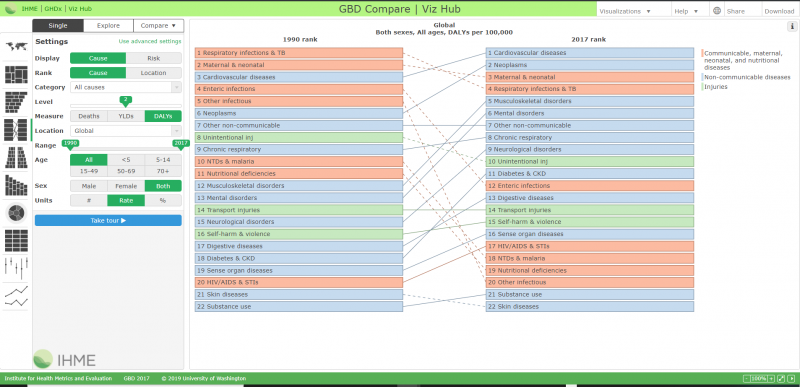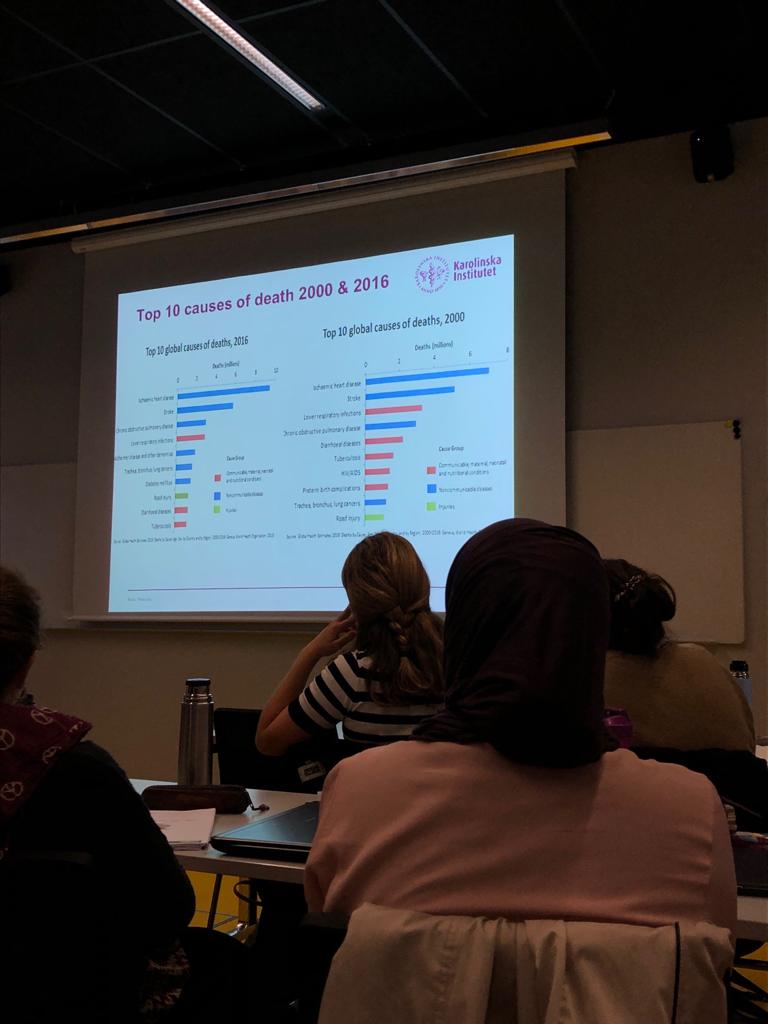
And so… it begins! First Global Health course review
Hello everyone! On this post I’ll be talking about and reviewing our first module in the Global Health Master’s at KI, also called… Global Health! The Global Health course accounts for 7,5 credits (out of the 60 credits we need to graduate) and is our introduction to the master’s and the field.
During its 5 weeks we have introductory lectures on key concepts for Global Health, health determinants and indicators, academic writing classes, and short introductions for all of other modules awaiting us. Apart from that it’s when we’re all getting used to commuting through Stockholm, getting to know ou classmates and the basics of living in Sweden.
But first… some background
Our program is a one-year master’s, meaning it is super intensive and eventful. When classes begin in September, we are looking at 6 class-based modules before moving on to writing our theses and carrying out research! These 6 modules represent 30 credits and are dedicated to different fields within Global Health studies. The other half of our credits come from the degree project, the last step before graduation.
First of all, we begin with the Global Health module, the one being reviewed on this blog. Then, we move on to 1) Research Methodology; 2) Health policy, management and economics; 3) Infectious diseases – a challenge to global health: clinical, social and preventive aspects; 4) Non-communicable diseases, injuries, natural emergencies and conflicts in a global health perspective and lastly 6) Maternal and child health in a global perspective.
If you’re curious about more details regarding these modules and want to check out the program’s syllabus, you’ll find it here https://education.ki.se/programme-syllabus/3GB12?_ga=2.7967089.2117538865.1572881452-1037713184.1556110925. Also, you’re always welcome to send me e-mails, should you have any doubts!
The grading system
This can be a bit unexpected for a lot of people – like myself – who haven’t studied at KI before, but we are not graded based on a numbered scale, but rather on a scale made up of three components: Fail; Pass or Pass with distinction. The requirements for each of these thresholds vary according to each course.
Back to our introduction to Global Health
An overview of our lectures includes (but is not limited to):
- What is Global Health and course introduction
- Health determinants and indicators
- Global Burden of Disease Study
- Academic Writing
- Use of sources and plagiarism
- Research Ethics
- Sustainable Development Goals
- Introduction to Maternal & Child Health
- Introduction to Non-Communicable Diseases in Global Health
- Introduction to Infectious Diseases in Global Health
- Introduction to health systems and health policy
- Introduction to Bioentrepreneurship
- Introduction to Global Public Health in Disasters
- Quantitative and Qualitative Research Methods
Lectures are given by different professors, with expertise in each field. It sure sounds like a lot… and it is! All these bits of information from different angles and areas in just a few weeks’ time got many of us confused and feeling like it might’ve been better to discuss more deeply about less matters. But fear not: at the end of the day, most of these classes are just a first taste to what we’ll delve into later on, during the other modules.

Group Work
As you may have seen on my colleagues’ blogs, group work seems to be a huge part of any program here at KI! For this first module, we were separated in different groups for quite a few assignments, and the overlapping between them sometimes made organization hard and drove us a little crazy, but was still good for practicing group work skills, learning and getting to know our classmates.
For the Academic Writing bit, we were supposed to pick a well-graded thesis from last year’s batch of Global Health students and critique it based on the lectures we had had, which I thought was very interesting and useful to understand what I’ll be doing in a few months, as well as understand strengths and limitations on other research works. After a few weeks, all groups presented their critique to the rest of the class.
We were also divided to present on broad topics assigned to us. They were: Antimicrobial Resistance; Innovation and global health; Global health diplomacy; Climate change and global health; Sustainable Development Goals (SDGs) and business sector; SDGs and civil society. We had to delve into the topics according to our own discussions and then present it to professors and classmates, focusing on its Global Health impacts.
And then we also had less demanding group exercises, such as observations to carry out together, discussions on literature and so on.
Exam
After all this, the course ended with a written, 3-hour exam with open-ended questions on most of the topics mentioned in the lectures.

What happens now?
As of now, we’ve moved on to the Research Methodology course. We’re being introduced to quantitative and qualitative methods in health research and a review shall be posted here in the coming weeks!
Thanks for reading, and stay tuned! See you next time!

0 comments